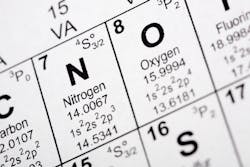USGS study shows anammox can remove nitrogen from groundwater
RESTON, Va. — Nov. 5, 2015 — Scientists demonstrated that nitrogen can be removed from groundwater through the action of naturally occurring bacteria, according to a press release.
The study was carried out by researchers from the U.S. Geological Survey (USGS) in collaboration with partners from the Virginia Institute of Marine Science and the University of Connecticut, noted the release. Together, they conducted the first-ever field measurements of anammox activity in groundwater.
Anammox, short for anaerobic ammonium oxidation, is a process carried out by naturally occurring bacteria that can simultaneously remove ammonium and reduce nitrogen oxides (such as nitrate and nitrite), combining the two to produce harmless nitrogen gas, stated the release.
Nitrate and ammonium are fixed nitrogen contaminants that are found in surface water and groundwater worldwide, reported the release. Until fixed nitrogen is converted back to nitrogen gas, it remains as a potential water contaminant. Anammox and denitrification are the only two processes that can remove excess fixed nitrogen by chemically changing it back to nitrogen gas, USGS noted in the release.
“Virtually all terrestrial and aquatic environments now contain extra fixed nitrogen from human activities, including groundwater, the planet’s primary freshwater resource,” said Richard Smith, a USGS research hydrologist and lead author of the study, in the release.
Working at a USGS groundwater study site at Cape Cod, Mass., the research team found that anammox was active in the subsurface in a variety of geochemical conditions, even where groundwater ammonium concentrations were low. According to the study, the rates of activity were relatively low but anammox could potentially affect inorganic nitrogen concentrations in situations where groundwater residence times are sufficiently long.
“Because anammox is a process that can supply its own organic carbon by fixing carbon dioxide, naturally occurring anammox bacteria are ideally suited for life in groundwater, where they could potentially be important for fixed nitrogen removal,” Smith explained in the release. “While practical applications are still in the distant future, this process could be particularly important where groundwater is discharging to surface waters and coastal environments.”
The full findings of the investigation have been published in the journal Environmental Science and Technology.
You can find the entire release here.
